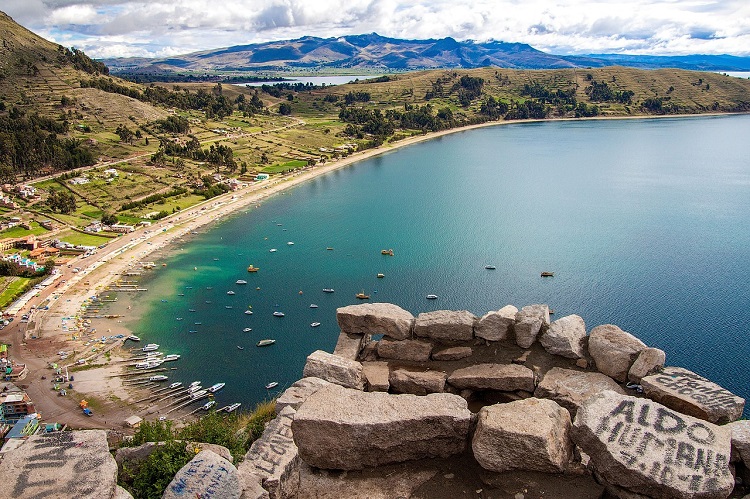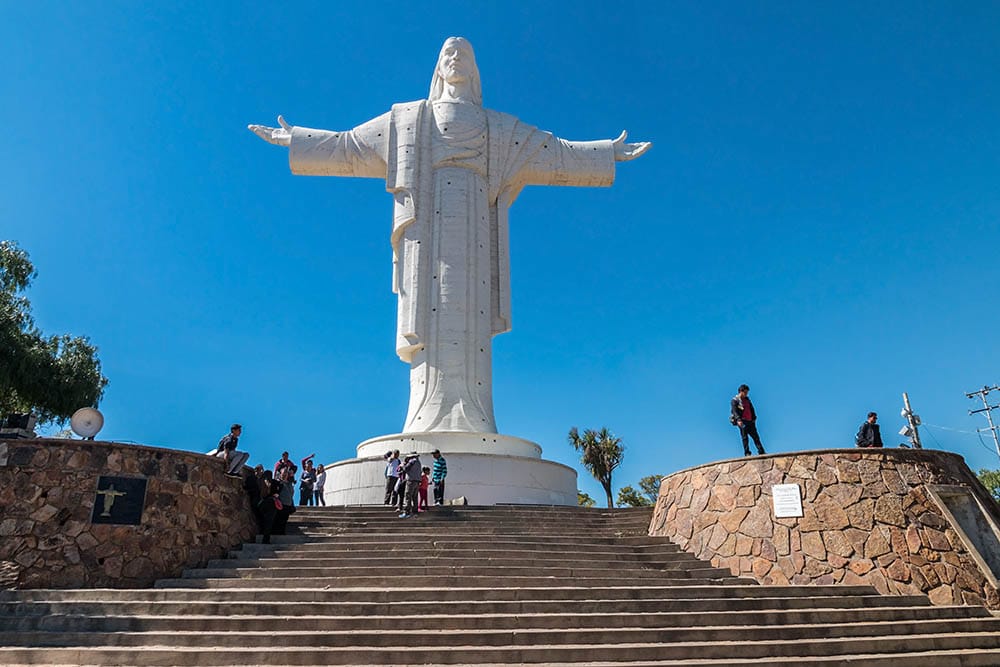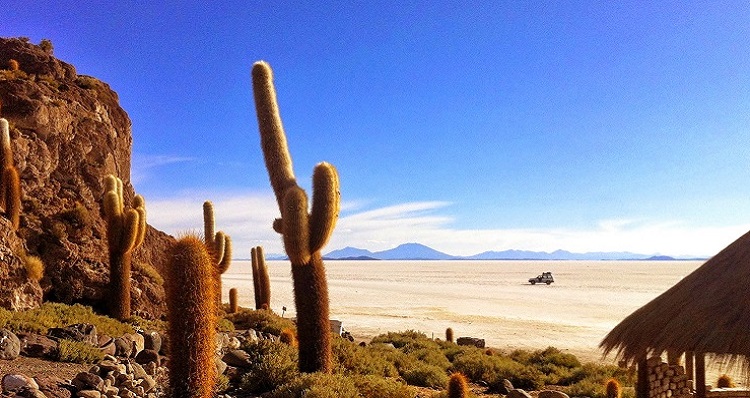Why Visit Bolivia?
Bolivia is a land of unmatched diversity, boasting stunning landscapes from the Andes mountains to the Amazon rainforest, and rich cultural heritage that draws travelers from around the world. With its unique blend of natural beauty and vibrant cultures, Bolivia offers a plethora of experiences that cater to adventurers, nature lovers, and history enthusiasts alike.
Top Tourist Destinations in Bolivia
1. Salar de Uyuni
Salar de Uyuni is the world’s largest salt flat, stretching over 10,000 square kilometers. This breathtaking landscape is often compared to a surreal mirror, reflecting the sky during the rainy season.
Travel Tips for Visiting Salar de Uyuni
- Best time to visit: April to November for dry season and mirror effect.
- Pack warm clothing as temperatures can drop at night.
- Consider booking a multi-day tour to explore nearby attractions.

Pros and Cons
| Pros | Cons |
|---|---|
| Stunning visual landscapes | Remote location and limited accommodation options |
| Unique photography opportunities | Potential for altitude sickness |
2. La Paz
La Paz, the world’s highest capital city, is a bustling metropolis that showcases the history and culture of Bolivia. From the colorful markets to the breathtaking views of the Andes, La Paz is a must-visit.

Must-See Highlights in La Paz
- Witches’ Market – A fascinating place to learn about traditional medicine.
- Valle de la Luna – A unique geological formation resembling a lunar landscape.
- Teleférico – A cable car system offering panoramic views of the city.
Pros and Cons
| Pros | Cons |
|---|---|
| Vibrant culture and history | High altitude may affect some visitors |
| Abundance of activities and attractions | Traffic congestion can be challenging |

3. Lake Titicaca
Lake Titicaca is the highest navigable lake in the world, renowned for its clear blue waters and indigenous communities. The lake is shared between Bolivia and Peru, with numerous islands offering rich cultural experiences.
Traveling Tips at Lake Titicaca
- Visit Isla del Sol for hikes and sacred Inca sites.
- Take a boat tour to explore the floating islands of Uros.
- Stay hydrated and acclimatize due to high altitude.

Pros and Cons
| Pros | Cons |
|---|---|
| Rich cultural heritage | Can be touristy during peak season |
| Beautiful scenery and outdoor activities | Some areas may lack modern amenities |
4. Potosí
Potosí is famous for its rich silver mining history and is a UNESCO World Heritage Site. A visit to the city offers insights into Bolivia’s colonial past and the struggles of mining communities.

Don’t Miss in Potosí
- Visit the Cerro Rico Mountain for a guided mine tour.
- Explore the stunning colonial architecture in the city center.
- Learn about the history at the Casa de la Moneda museum.
Pros and Cons
| Pros | Cons |
|---|---|
| Historical significance and cultural depth | High altitude may pose challenges |
| Interesting guided tours available | Limited nightlife and entertainment options |

5. Madidi National Park
Madidi National Park is one of the most biodiverse places on Earth, offering opportunities for hiking, wildlife viewing, and immersive jungle experiences. It’s a paradise for nature lovers and adventure seekers.
Exploring Madidi National Park
- Opt for guided tours to explore remote areas safely.
- Be prepared for rain and humidity regardless of the season.
- Pack eco-friendly products to minimize your impact.

Pros and Cons
| Pros | Cons |
|---|---|
| Incredible wildlife sightings | Accessibility can be challenging |
| Adventure and eco-tourism focus | Limited infrastructure in remote areas |
6. Sucre
Sucre, Bolivia’s constitutional capital, is known for its well-preserved colonial architecture and historical significance. The city is often seen as the cultural heart of Bolivia.
Highlights of Sucre
- Visit the stunning Casa de la Libertad for Bolivian history.
- Stroll through the picturesque Plaza 25 de Mayo.
- Sample local cuisine at charming cafés and restaurants.
Pros and Cons
| Pros | Cons |
|---|---|
| Rich cultural atmosphere | Less nightlife compared to larger cities |
| Beautiful and walkable city center | Some attractions require entrance fees |
7. Torotoro National Park
Torotoro National Park is famous for its stunning rock formations, dinosaur footprints, and impressive caves. It’s a perfect destination for hiking and exploring Bolivia’s geological features.
Visiting Torotoro National Park
- Expect a full day of hiking; wear sturdy shoes.
- Join a guided tour to ensure you find the best spots.
- Bring a camera to capture the unique landscapes.
Pros and Cons
| Pros | Cons |
|---|---|
| Unparalleled natural beauty | Remote location requires planning |
| Diverse hiking opportunities | Lack of amenities in the immediate area |
Practical Travel Tips for Bolivia
Preparing for Your Trip
- Check the weather conditions for the regions you plan to visit.
- Ensure you have travel insurance that covers high-altitude activities.
- Learn a few basic Spanish phrases; it enhances your travel experience.
Health and Safety
Altitude sickness is a common concern in Bolivia. It’s advisable to take it easy on your first day in high-altitude locations, stay hydrated, and consult a doctor before traveling if you have health concerns.
Currency and Costs
The currency in Bolivia is the Boliviano (BOB). Cash is preferred in many places, especially in remote areas. Budget travelers can find affordable accommodation and food, making Bolivia a great destination for those looking to explore on a budget.
FAQs About Travel in Bolivia
What is the best time to visit Bolivia?
The best time to visit Bolivia is during the dry season from April to October when the weather is more favorable for trekking and exploring.
Do I need a visa to visit Bolivia?
Visa requirements vary depending on your nationality. Many travelers can enter Bolivia with a tourist visa for up to 90 days, but it’s important to verify the latest regulations before traveling.
How do I get around in Bolivia?
Public transportation is available in cities, with buses being the most common way to travel between towns. For more remote areas, consider booking tours that include transportation.
Is Bolivia safe for travelers?
Like any travel destination, Bolivia has areas that are safer than others. It’s advisable to stay aware of your surroundings, avoid displaying valuables, and travel in groups when possible.